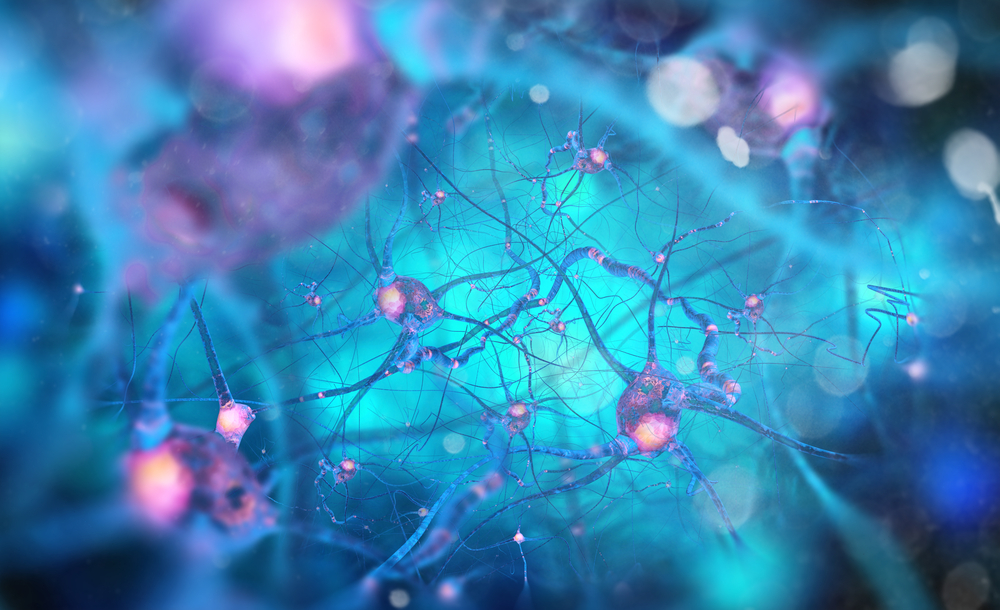Size of SOD1 Protein Aggregates in ALS Patients’ Brains Leads to Different Outcomes, Study Shows

Size matters when it comes to SOD1 protein aggregates found in the brains of patients with amyotrophic lateral sclerosis (ALS), according to researchers. They found that large SOD1 aggregates may help protect motor neurons from dying, while short SOD1 aggregates promote the death of motor nerve cells.
Their findings support a protective role with large SOD1 aggregates and suggest a potential new therapeutic strategy for ALS and other neurodegenerative diseases.
“This is potentially an important finding not only for ALS research but for neurodegenerative disease research in general, because the formation of fibril aggregates is so common in these diseases,” Nikolay Dokholyan, PhD, the Michael Hooker Distinguished Professor of Biochemistry and Biophysics at University of North Carolina-Chapel Hill and the study’s lead author, said in a university news story by Mark Derewicz.
The study, “Large SOD1 aggregates, unlike trimeric SOD1, do not impact cell viability in a model of amyotrophic lateral sclerosis,” was published in the journal Proceedings of the National Academy of Sciences.
Small protein aggregates of the protein SOD1, such as those made of just three copies of the protein — called trimeric SOD1 — are found in ALS patients’ brains, where they’ve been linked to the death of nerve cells.
Large fibrillar SOD1 aggregates are also found in the brains of ALS patients. But whether they are the cause of death of motor nerve cells remained unknown.
In their study, UNC researchers compared the effects of the large SOD1 fibrils to that of trimeric SOD1 in the death of motor nerve cells. They did this by designing mutations in the SOD1 gene that specifically stabilized and led to SOD1 large fibrils, or trimers.
“One challenge is that the smaller structures such as trimers tend to exist only transiently on the way to forming larger structures,” said Cheng Zhu, PhD, the study’s first author.
“But we were able to find an SOD1 mutation that stabilizes the trimer structure and another mutation that promotes the creation of the larger fibrils at the expense of smaller structures. So, we were able to separate the effects of these two species of the protein,” he said.
They then tested the toxicity of the SOD1 fibrils vs. SOD1 trimers by producing them in motor neuron-like cells, the ones that are killed in ALS.
The results confirmed their previous findings for SOD1 trimers, that cells expressing this type of mutated SOD1 died much faster than control cells expressing normal, non-mutated SOD1.
Trimeric SOD1 aggregates resulted in the death of neurons even faster than mutated forms of the protein found in severe hereditary ALS cases.
Looking at the cells expressing the mutant forms of SOD1 that make long fibrils, researchers found their viability was similar to that of cells expressing normal (wild-type) SOD1. The findings suggest these large SOD1 aggregates may actually protect cells from death.
“Taking a drug to promote fibril formation could be one way to reduce toxicity in SOD1-ALS,” Dokholyan said.
Alternatively, he added, they could limit the formation of trimers or other small toxic SOD1 aggregates.
SOD1 mutations are the cause of about 12% of hereditary ALS cases and 1.5% of non-hereditary ALS.
“Although SOD1-associated ALS represents a small fraction of all ALS cases, uncovering the origins of neurotoxicity in SOD1 aggregation may shed light on the underlying causes of an entire class of neurodegenerative diseases,” Dokholyan said.
Now, researchers will try to identify the processes behind the toxicity linked to trimeric SOD1 and try to find treatments that may prevent their formation.






